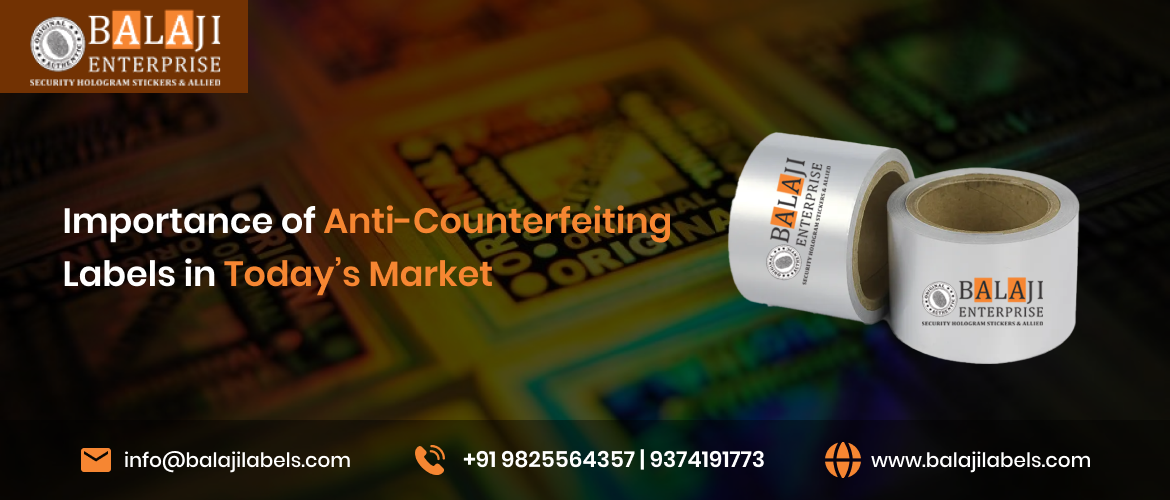
Today, anti-counterfeit labeling is a fundamental aspect of product security. These special tags, designed for visible deterrence and hidden authentication, protect products in various industries.
anti-counterfeit label is used to deter counterfeiting and verify the authenticity of their products. This label comes with several security features that make it typical for counterfeiters to duplicate.
- Overt features
Visible to the naked eye, these include holograms, unique patterns, or color-shifting inks. Holograms with intricate designs or text that change depending on the angle are common examples.
- Covert features
Require specialized equipment to detect, such as micro-printing (tiny text or patterns) or invisible fluorescent inks. These features add an extra security layer and make counterfeiting more tough. Anti-counterfeit labels serve as a good protection against fake products. They offer unique features like one-time use codes, lotteries, point collection, detailed product info, and traceability. These labels help companies achieve great results at a low cost. New anti-counterfeiting labels can even be a selling point, ensuring product authenticity, boosting consumer confidence, and enhancing brand image and reputation. When consumers verify these labels, they engage with the company’s brand, increasing repeat purchases.
Applying a security label to a product not only does counterfeit label protection, but it builds a strong brand reputation. These labels are not just for security; they are also a marketing tool and a key selling point.
Selling Point of Anti-Counterfeit Labels
- Consumers can effortlessly identify and inquire: Consumers don’t need to know specialized identification techniques. They only need to scan them with telephone inquiries or send short messages to easily check the authenticity of products. This is very convenient.
- Each product gets a unique anti-counterfeiting code, identified on its label or package through the anti-counterfeit system. Like a unique ID card for each label, the product’s code cannot be copied by counterfeiters.
- Low-cost, two-dimensional code anti-counterfeiting labels are simple to use. Adding common QR codes, barcodes, and laser anti-counterfeit labels incurs minimal extra cost.
- The system records anti-counterfeiting labels and checks details like time and certification. By tracking how often the code is checked and where the inquiries come from, it can verify product authenticity, locate counterfeit goods, and give accurate clues to law enforcement to catch counterfeiters quickly. QR code security is convenient and boosts interaction with consumers, enhancing a company’s visibility and trustworthiness.
- The unity of management, this anti-counterfeit label can be used for any kind of goods on the use of the network across the country to establish a nationwide anti-counterfeiting network at any time monitoring, unified management.
- The use of a one-off for each product of the counterfeit tags in general, can only be used once. Once used, scratching the coating, or peeling off the surface, the anti-counterfeit labels can be significantly damaged, which is different from other unused anti-counterfeit labels. Authorized special products or valuables can be processed through the technology of the system service center. After the first query, its legal owners can enjoy multiple inquiries on the security label right.
Anti-counterfeit Labels Offer an Umbrella for Products
- Adaptive anti-counterfeit labels work for many products like cosmetics, health items, medicines, electronics, alcohol, tea, everyday items, fast-food drinks, and clothing labels.
- Anti-counterfeiting labels stay stable in regular conditions, maintaining their identification features for a long time. For instance, fluorescent and temperature-change inks have a decay period but generally hold up well.
- Anti-counterfeit labels are unique to each product, with one label for each item or batch. For example, digital anti-counterfeiting assigns a unique identity code to each label.
Applications of Anti-Counterfeit Labels for Security Purposes
- Security Printing: Uses invisible micro-printing or UV fluorescent inks visible only under specific light.
- Holograms: Complex designs that are nearly impossible to replicate.
- RFID Tags: Use radio waves to track and identify goods.
- Tamper-Evident Labels: Show any interference or tampering, often used on medicine bottles and electronic packaging.
- Color-Shifting Inks: Change color when viewed from different angles, making them hard to forge.
Summing Up
Anti-counterfeiting labels protect a business’s brand by preventing fake products from reaching customers and causing harm or dissatisfaction. It also helps increase customer trust.
To buy anti-counterfeiting labels like hologram stickers, you must connect with a trusted manufacturer of holographic items, like Balaji Labels.

